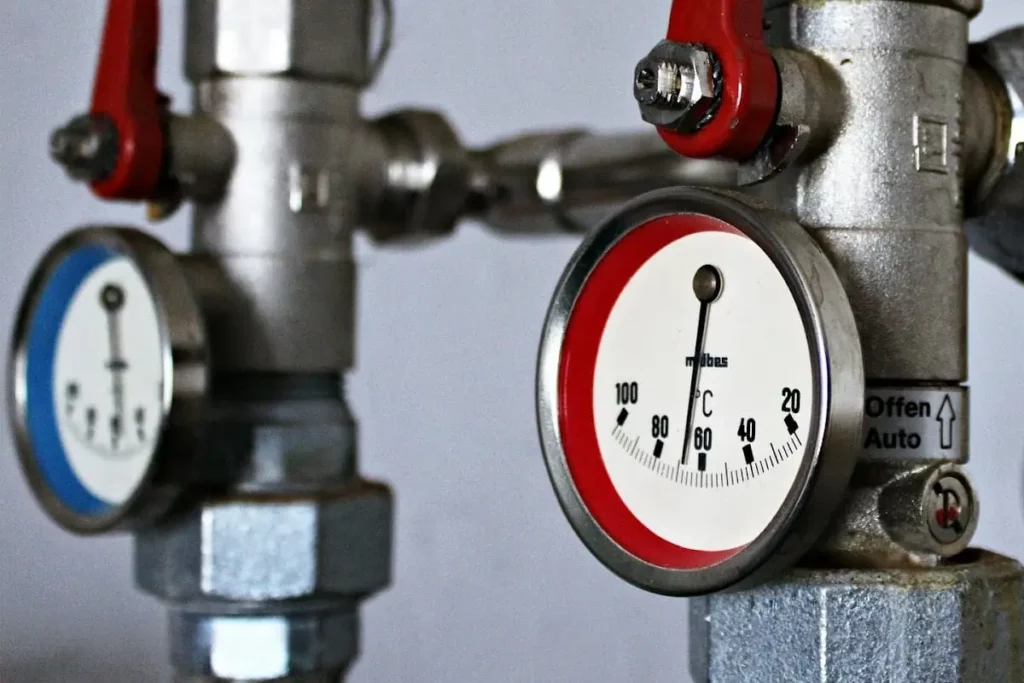Many industries are dependent on types of check valves within their process systems. There are various types available depending on the application requirements. These valves are specifically designed to be reliable and efficient, maximise an operation, and make sure things run safely and smoothly.
The inventor Frank P Cotter, known for his industrial innovation, created a check valve that was simple and self-sealing that could be adapted to be utilised in pipe connections. The advantage of Cotter’s development was that it could be used without needing special fittings to connect to other pipes. These valves were also developed to be easily repaired and inspected.
Famed inventor Nikola Tesla also contributed to check valve development with his deceptively simple one-way valve patented in 1920. Here, we see that the utility of these valves is numerous and contained inside a vast history.
Different Types of Check Valves Used in Industries
1. Bronze Swing Check Valves
One of the most widely used valves is the Bronze Swing Check Valve which is commonly used in both the industrial and commercial sectors. These valves function by opening in response to forward-moving flow and close due to flow stoppage, preventing or reducing reverse flow occurrences. They protect pumps and pipe systems from the damage resulting from reverse flow. Swing Check valves produce lower pressure loss and are used with hot and cold water, low-pressure steam, HVAC, compressed air and many general utility services.
2. Cast and Ductile Iron Swing Check Valves
Cast and Ductile Iron Swing Check Valves operate under high and low pressures and have a relatively long life expectancy. These valves feature an unrestricted flow path and consequently have an improved flow capacity and lower pressure loss. Their longevity is a result of a solid structure and simple design.
3. Tilting Disc Check Valves
Tilting Disc check valves were developed for use in pumping stations conveying drinking water and other neutral liquids. The Tilting Disc check valve has a reduced closing angle which enables them to provide improved closing performance, subsequently reducing slam and pressure surges developed in the piping system on pump shutdown. These valves are typically installed in water pumping stations where multiple pumps are used and water is discharged from each pump into a common header pipe. Although they have a reduced operating angle, they offer relatively low-pressure loss through the valve.
4. Dual Plate Check Valves
Manufacturer’s offer a variety of Dual Plate Check valve designs and configurations including retainer and retainer-less designs, wafer style, lug style along with double flanged style configurations. They are available in a wide variety of different body and trim materials that include both resilient and metal seats. These valves are high-performance, and the original Mission wafer check valves were made available on the market during the late 1950s. These valves are available in sizes ranging up to 88″ with pressure ratings running up to Class 4500.
5. Ball Check Valves
These are simple and reliable valves. They feature only one moving part in the shape of a spherical ball that blocks any reverse flow. They feature either a reduced or full-ported valve seat that is uniquely designed to allow the ball to seat and create a leak-tight seal without it becoming wedged into the valve seat.
Application of Check Valves
Check valves are ‘self-actuating’ devices designed to allow media to be transported in a single direction while preventing backflow or flow in the opposite direction. These valves are primarily utilized in potable (drinking) water, wastewater, and irrigation applications. However, they also feature in other applications, including processing, mining, food & beverage, oil & gas, pharmaceutical, power, transporting hot and cold water, HVAC systems, steam, chemical, petroleum refining and production.
How to Choose the Right Check Valve
To ensure your operations run efficiently and safely, the correct check valve must be chosen under the right set of considerations. Some of the things that you need to consider when selecting a check valve include flow characteristics, fluid compatibility, non-slam characteristics, pressure-loss, and the total cost of ownership. You must ask yourself what the system’s requirements are and the installation cost. It is essential to look at each type of check valve and discern the specific installation and its particular characteristics before purchasing and installing.
The Best Valve for You
There are many kinds of check valves, and each is made for specific purposes. Some valves are compact, sturdy, and designed with high pressure-temperature services in mind. Other check valves are manufactured to reduce the magnitude of slam and pressure surges that can be generated when the check valve closes following pump stoppage. Commonly known as check valve slam. The innovations of these valves are born from particular purposes and have made the world safer and more productive.
Contact John Valves to ask about the best check valves for your industry or business.

